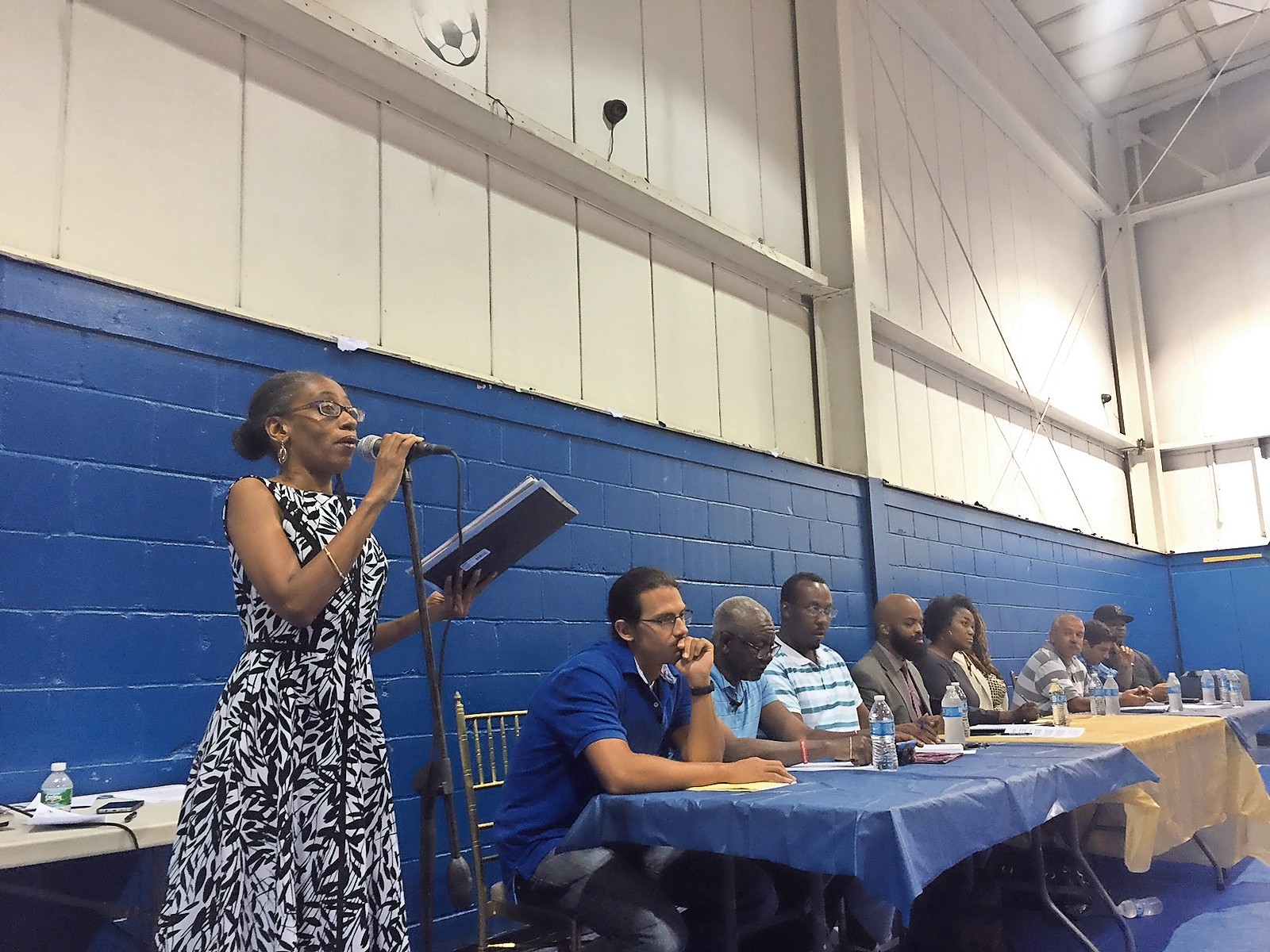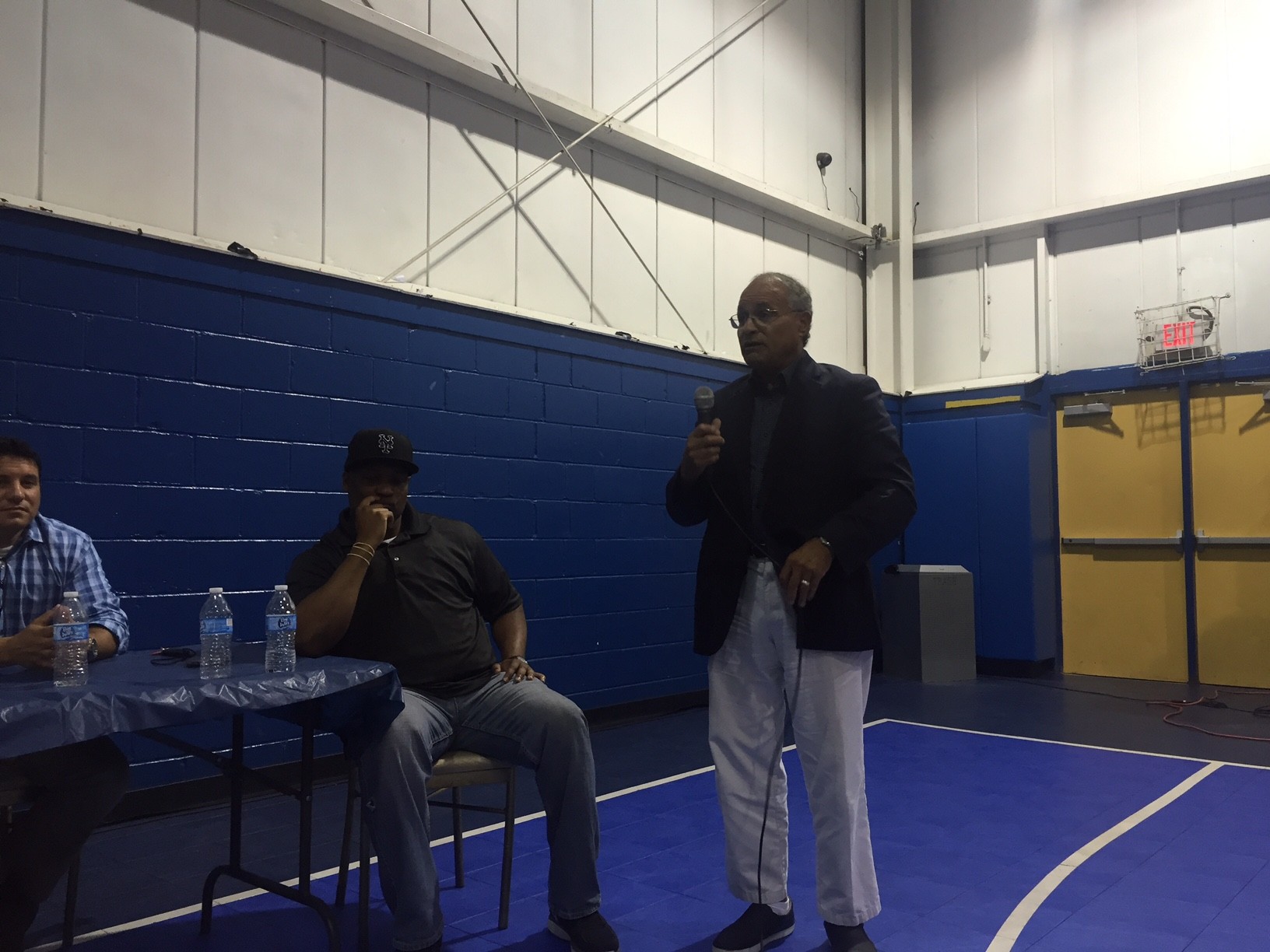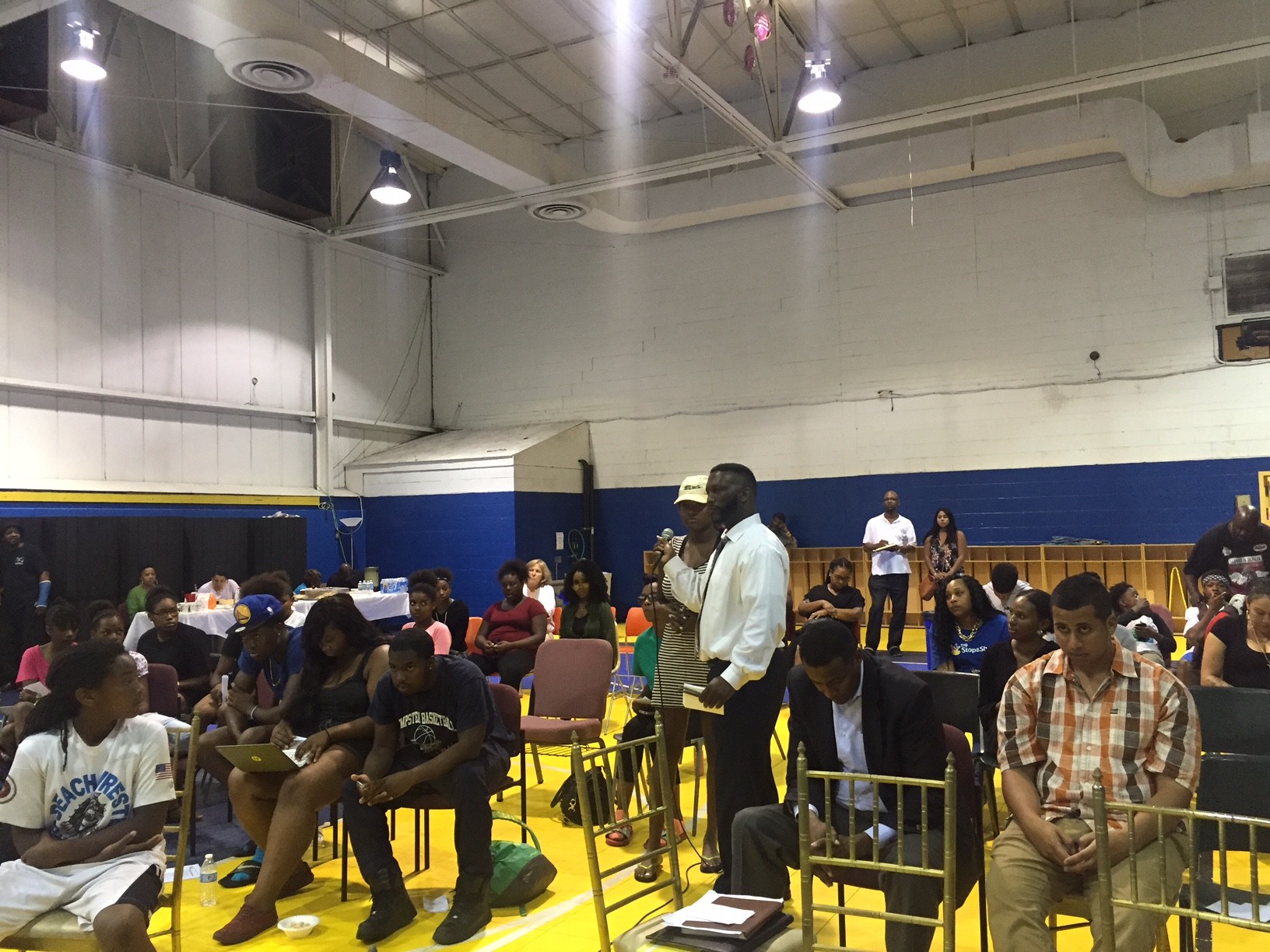Wednesday, April 24, 2024
 49.0°,
Fair
49.0°,
Fair
Trying to bridge a divide
Forum at MLK Center addresses national debate about race and law enforcement
“It does trouble me, as a police officer, when kids say that they’re afraid of the police,” said Anderson Joseph, a detective with the Long Beach Police Department and one of two black officers on the force.
Joseph, who lives in Long Beach and joined the LBPD in 2006, responded to a young woman who asked, “Why do police always think we’re going to hurt people?”
It was one of many questions raised at a forum on July 13 at the Martin Luther King Jr. Center, called “Bridging the gap between the community and police.”
The event, organized by City Councilwoman Anissa Moore, MLK Center Chair James Hodge and the Concerned Citizens of North Park, was held a week after the fatal shootings by police of Alton Sterling in Baton Rouge, La., and Philando Castile in Falcon Heights, Minn.
The incidents were captured on video and sparked yet another wave of protests across the country against the killing of reportedly unarmed black men by police that has further galvanized the Black Lives Matter movement.
The forum also came on the heels of the shooting deaths of five police officers in Dallas, Texas, who were protecting a peaceful protest there. They were reportedly gunned down in retaliation for the deaths of Sterling and Castile, and, in addition to the killings of three police officers in Baton Rouge on July 18, many say that the violence has left the country divided.
“The most recent national events have evoked pain, deep feelings of anger and frustration and even despair, for some,” Moore told the audience. “Our goal here is to begin the dialogue — to develop an understanding and to reduce the misconceptions regarding the community as well as the police. More importantly, our goal is to create an action plan, and to renew our commitment to our city, so we can value all lives.”
The event featured a panel discussion with Joseph and three other Long Beach detectives, Michael Popper, Michael Bulik and Ted Christensen; the Rev. William Fuller, a former chairman of the MLK Center and activist; Runnie Myles, vice chairman of the Concerned Citizens of North Park; Jason Starr, a civil rights attorney and director of Long Island’s New York Civil Liberties Union; Dana Boylan, an assistant Nassau County district attorney and director of the Council of Thought and Action; and Ayesha Brantley, a Hempstead Village Court judge.
Among the approximately 100 people in the audience were members of the City Council, City Manager Jack Schnirman and State Sen. Todd Kaminsky. Police Commissioner Mike Tangney said he was unable to attend.
Though speakers at the forum discussed a national debate surrounding race and law enforcement, they acknowledged that such incidents have not occurred in Long Beach.
“A lot of our officers are from Long Beach, grew up in Long Beach — a lot of the people we interact with are former classmates, friends, people we know in the community,” Popper said. “That is almost always a benefit to the community and Police Department.”
Still, speakers attempted to address the local reaction to the incidents that have occurred in other cities.
“Excessive use of force — that may not be an issue in Long Beach,” Starr said. “You can’t talk about solutions or next steps monolithically … because what needs to happen in St. Paul, for example, or Baton Rouge might look very different than what needs to happen, if anything, in Long Beach. Long Beach might be light years ahead of where those departments are. So one of the things is really just engaging with law enforcement.”
A number of shootings have rocked the North Park community over the past several years, including the murder of 28-year-old Tyrenzo Brown, who was shot and killed in 2014 after he visited his daughter at Channel Park Homes. Police arrested the suspected gunman, Antonio Webb, hours after the shooting.
A year before Brown’s death, the Police Department worked with the Concerned Citizens to create a Crisis Intervention Team in the Channel Park Homes and North Park area, a six-member group made up of community leaders and clergy that serves as a liaison between the community and the police, among other efforts.
However, panelists and those in the audience called for more community policing and interaction between officers and residents to not only help stem the tide of gun violence locally, but also bolster relations with police to ease any tensions that could arise as a result of widely publicized shootings.
“The reason why I really wanted to have this forum is to save lives because of everything we are seeing on a national level,” Moore said after the meeting. “Community policing works on both sides — what we heard from the residents is that they want to know their officers.”
Black Lives Matter, Blue Lives Matter
After Dallas, Goldie Taylor, a writer for the Daily Beast, pointed out in a July 12 column that some attempted to paint the Black Lives Matter movement as “inherently racist” and dangerous.
“For those who do not want to acknowledge a national issue or problem we have to confront … it’s easy just to say that, ‘Well, Black Lives Matter represents anti-police or anti-cop,’” said Starr. “I think that’s very dangerous because what it does is prevent us from having the kind of dialogue that’s absolutely necessary with law enforcement.”
Boylan said that support for the Black Lives Matter movement and police officers are not exclusive, and she and other panelists condemned any retaliation against police.
“You actually can support the great work of police officers … and be very pro-Black Lives Matter,” Boylan said. “We can’t be anti-police … but we must make sure that we hold people accountable, regardless of whether or not they are law enforcement. I do not believe in the idea that you have to pick a side.”
The approach
The most discussed topic surrounded traffic stops by police and when the use of force is warranted.
Bulik and other detectives answered procedural questions, such as what to do when drivers are pulled over and behaviors to avoid.
“Out on the street is not the place to plead your case,” Bulik said. “More cases than you can ever imagine are dismissed in the court. You’ll have your day in court. There is no point in arguing it on the street. I know tempers get hot, especially if you feel that you were right. Don’t take it out on the officer … if you feel you were treated more egregiously you also have the right to file a complaint with one of his superiors and that will be looked into. End the situation as quickly as you can and go through the proper channels.”
Starr acknowledged that police officers have a dangerous job, but said that there needs to be more awareness among police on a national level about the black experience. He added that it is a mistake not to acknowledge the fatal shootings of black men by police as part of a larger institutional issue about race.
“What I don’t hear a lot of is law enforcement having the conversations about how our blackness affects how we perceive law enforcement,” he said. “One of the things we need to do as a community is start to ask what additional kinds of cultural competency and sensitivity training our police officers have so that they can understand the realities and trauma that folks of color face, so that when they encounter and approach them, they can encounter and approach them with that prism.”
Others said that they believed it was unfair to lay the blame solely on police and argued that such lessons have to begin at home.
Joseph said that police in Long Beach have a strong connection with residents, and he and the other officers expressed support for the hiring of more minority police officers.
“Where Long Beach is concerned … we’re a little bit different, we’re a little bit more unique,” he said. “Can more be done? Absolutely. But please don’t be afraid of the police, regardless of what you see on the news. I do understand. But … I know all of the officers that I work with … and I can say … they are a part of this community and they do want to make policing better in Long Beach. We all do. We want you to feel safe in your community.”
HELP SUPPORT LOCAL JOURNALISM
The worldwide pandemic has threatened many of the businesses you rely on every day, but don’t let it take away your source for local news. Now more than ever, we need your help to ensure nothing but the best in hyperlocal community journalism comes straight to you. Consider supporting the Herald with a small donation. It can be a one-time, or a monthly contribution, to help ensure we’re here through this crisis. To donate or for more information, click here.
Sponsored content
Other items that may interest you









